*FYI - this post may contain affiliate links, which means we earn a commission at no extra cost to you if you purchase from them. Also, as an Amazon Associate I earn from qualifying purchases. Check out our Privacy Policy and Disclosure for more info.
From picturesque fishing villages to stunning nature reserves filled with cute birds, the province of Newfoundland and Labrador is one of the prettiest places to visit in Canada!
While Newfoundland and Labrador might be most famous for the two dog breeds that share the names, there are many interesting and beautiful places to explore within Canada’s easternmost province.
In this post, we’ll be sharing our top picks for places to visit in Newfoundland and Labrador, including the most charming islands and some more unusual attractions…
We hope you enjoy learning about this gorgeous Canadian province and be sure to let us know in the comments which Newfoundland and Labrador must-sees we should add to our list!
St John’s
St John’s is both the capital city and one of the prettiest places to visit in Newfoundland and Labrador.
Situated on the eastern tip of the island of Newfoundland, St John’s features buildings of a distinctive colorful style and is often compared to San Francisco due to the steep and winding streets. At the center of St John’s is Water Street, the oldest main street in North America.
The Rooms is probably the most famous tourist attraction in St John’s, containing the Provincial Museum, the Provincial Archives, and the Art Gallery of Newfoundland and Labrador all in one location. The Basilica of St. John the Baptist is one of the most important buildings in Newfoundland and well worth a visit to see its beautiful details.
Just outside St John’s are some more popular sites, including the Signal Hill National Historic Site and Cape Spear Lighthouse National Historic Site… which we’ll talk a bit more about below.
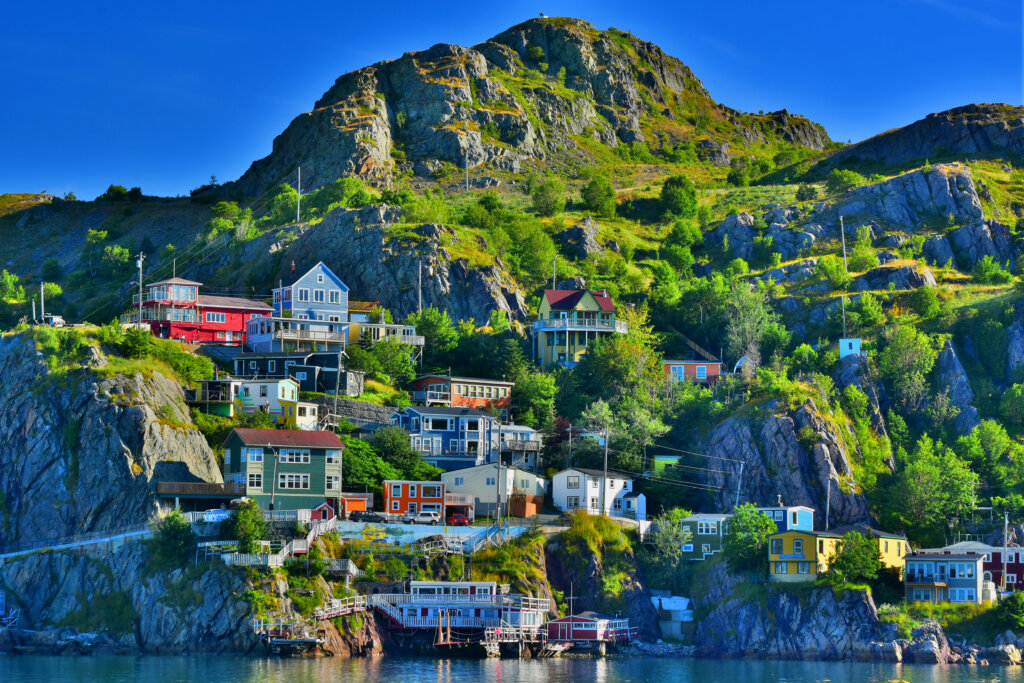
Cape Spear National Historic Site
Situated at the easternmost point in Canada, the Cape Spear National Historic Site is a truly special place in Newfoundland to witness sunrise.
Come here to watch the world light up before the rest of the country, then stay to enjoy the views from the oldest surviving lighthouse in the province, constructed in 1836.
For history buffs, there’s also Fort Cape Spear, a WWII coastal defense battery which has exhibits that show visitors what it was like to be a gunner here all those years ago, and if you time your visit right, you may even catch one of the many historic workshops that take place here, from rope splicing and butter churning to storytelling and candle making.
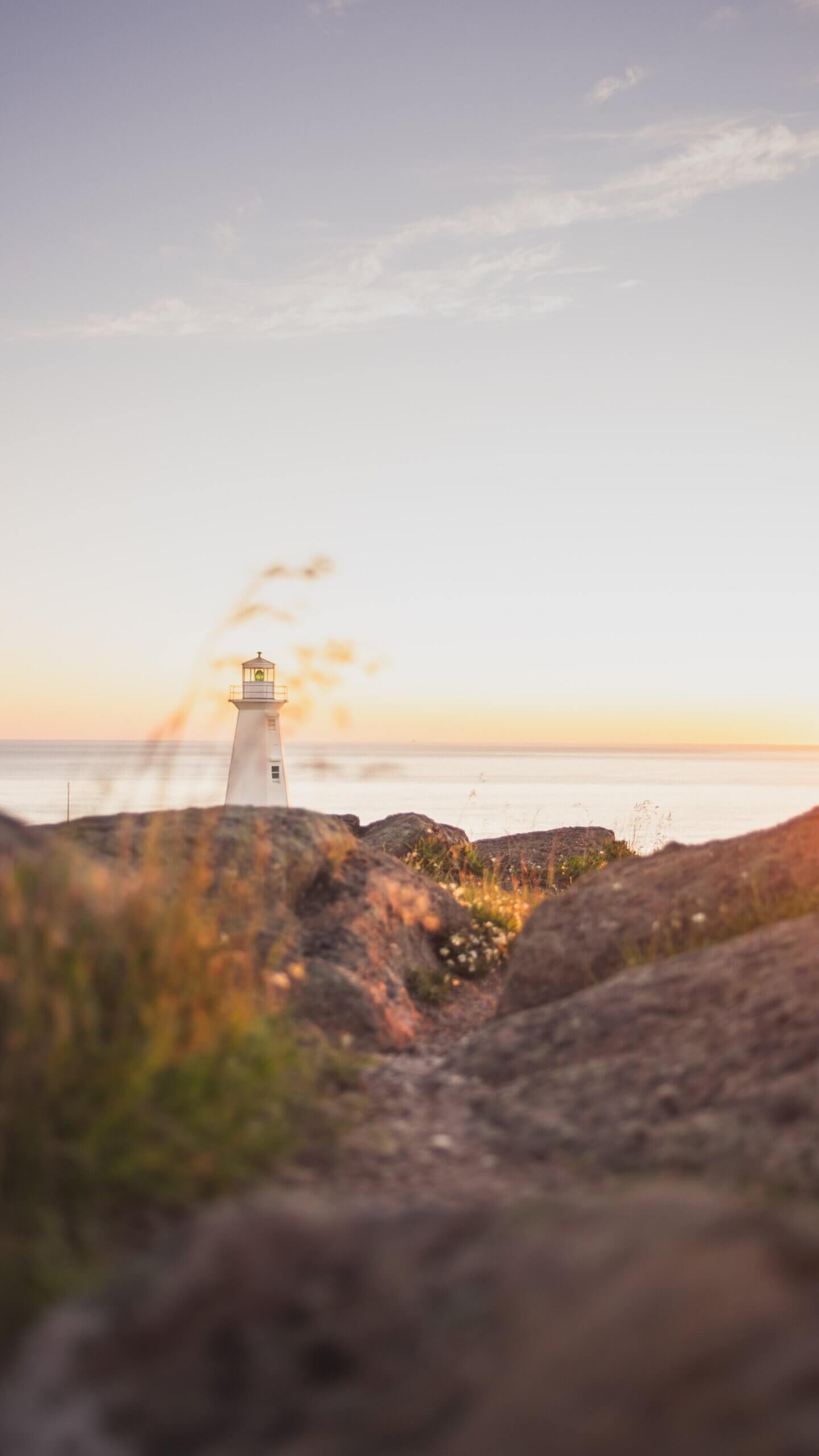
Port Rexton
Port Rexton is a quaint rural town on the island of Newfoundland that makes a great base for exploring the nearby natural sights.
The town is part of the wider Trinity Bight area, which contains a variety of coastal towns connected by some breathtaking hiking trails. One of the most famous of these is the Skerwink Trail, which can be hiked as a coastal loop with the possibility of spotting eagles, whales and icebergs.
Within Port Rexton proper are many cute and colorful 19th-century buildings, many of which house cozy BnBs, fish restaurants and traditional inns. The town is also a great jumping off point for boat tours of Trinity Bight to see puffins, eagles, whales and other wildlife.
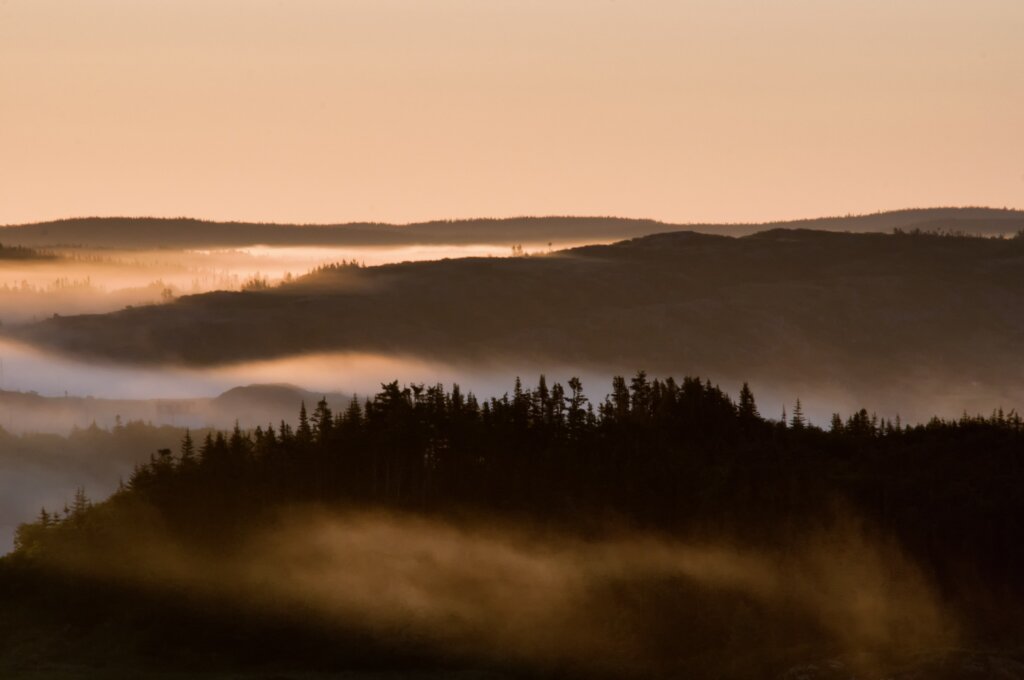
Witless Bay Ecological Reserve
One of the best places to go in Newfoundland and Labrador for puffin spotting is the Witless Bay Ecological Reserve.
This reserve is made up of four islands within Witless Bay: Gull Island, Green Island, Great Island and (the most amusingly named) Pee Pee Island! These islands are the nesting spots for North America’s largest Atlantic puffin colony which numbers more than 260,000 nesting pairs during spring and summer.
Aside from puffins, the islands are also popular for nesting with thousands of Leach’s storm-petrels, black-legged kittiwakes and common murres. It’s basically a birdwatcher’s paradise!
Humpback and Minke whales can often be seen in the surrounding waters as well, but you can only see all these beautiful creatures via a boat tour from nearby towns as landing is not allowed on the islands.
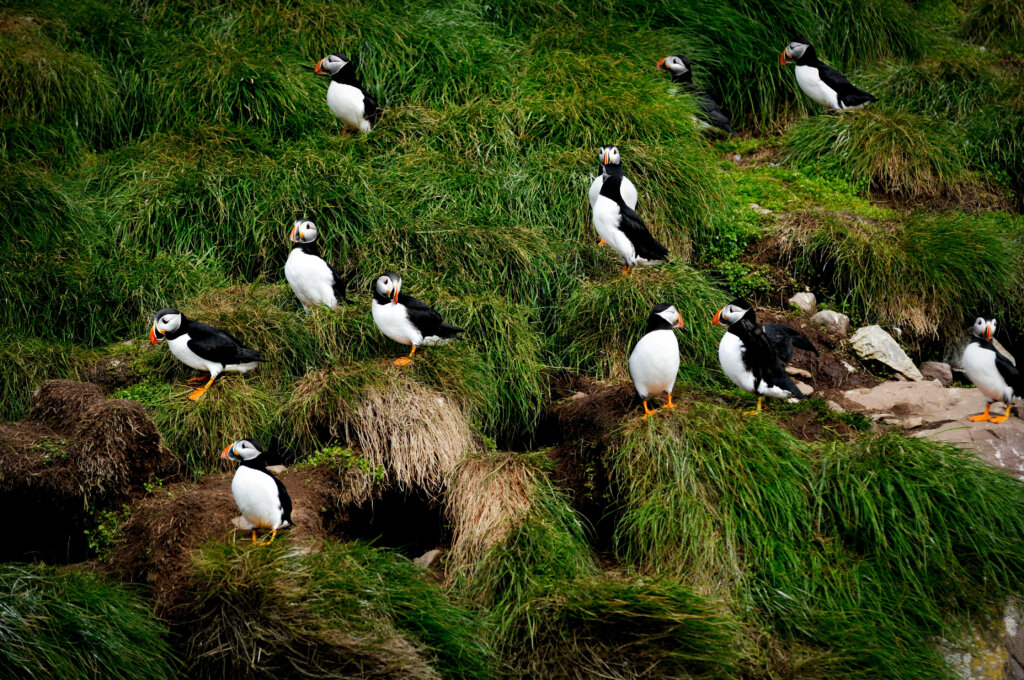
Cape Bonavista
Cape Bonavista is one of the most important Newfoundland and Labrador tourist attractions, as it’s generally believed to be where the famous Italian explorer John Cabot (Giovanni Caboto) first arrived to North America in 1497.
At the very tip of Cape Bonavista is the Cape Bonavista Lighthouse Provincial Historic Site, a pretty white and red lighthouse built in 1843. You can actually climb up inside to see the light (which was fueled by seal oil) dating from the 1800s. From up here, you might spot icebergs, whales and, almost definitely, puffins, as there’s a colony living on the island directly across from the headland!
Cape Bonavista is just a ten-minute drive from the town of Bonavista, so it’s a must-visit while exploring the island of Newfoundland. A replica of The Matthew (the ship John Cabot sailed to America on) is also located in the town of Bonavista and is now a museum.

Gros Morne National Park
Some of the most stunning Newfoundland and Labrador scenery can be found inside Gros Morne National Park, which is also a UNESCO World Heritage Site.
Located on the western side of Newfoundland, Gros Morne National Park is a hiker’s dream destination, with many marked trails for exploring the incredible green river valleys and vast cliffs. This is also a popular spot for geologists, as it shows the eroded remnants of a mountain range that’s more than 1.2 billion years old!
Aside from hiking, there are many opportunities for kayaking and boat tours to take in the rivers, ponds and a freshwater fjord. Like so many parts of Canada, this is also prime wildlife-spotting land, with resident moose, bears, foxes, lynxes, otters and beavers, along with visiting sea mammals such as seals, dolphins, porpoises and whales.
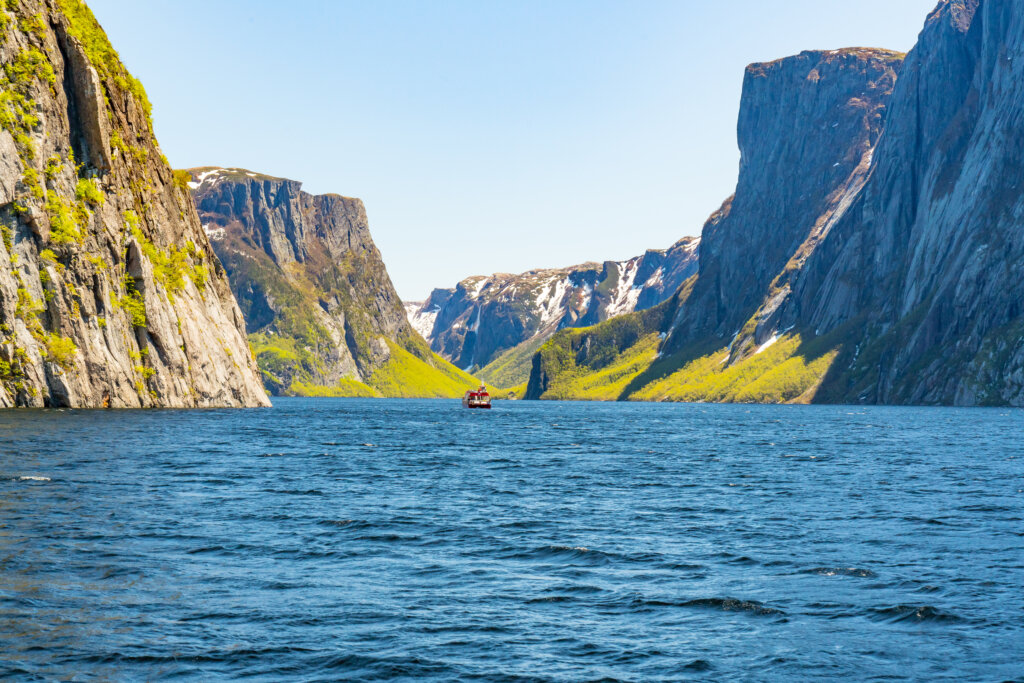
Woody Point Lighthouse
Fans of the Wes Anderson movie aesthetic and/or heritage lighthouses will want to make the trip to Bonne Bay in Newfoundland in order to see the pretty Woody Point Lighthouse.
This lighthouse is quite small but very cute and symmetrical, made of wood that’s been painted white with red details. The lighthouse which stands today was constructed in 1959 to replace the original from 1919.
Woody Point Lighthouse is actually located within Gros Morne National Park, so make sure you put it on your list if you’re planning to explore the park! If you visit at the right time of year, fields of wildflowers surround the lighthouse making the photo ops even better than usual.
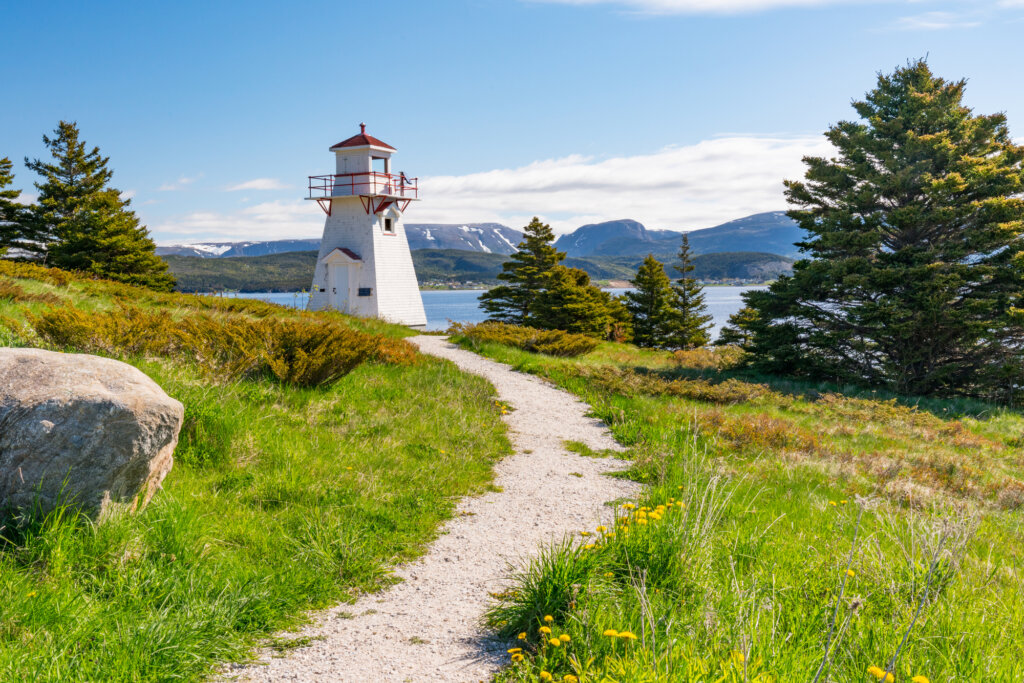
Arches Provincial Park
Arches Provincial Park is one of the most beautiful and interesting places to see in Newfoundland and Labrador due to the massive porous rock which gives the spot its name.
This park is located on the western side of Newfoundland, right beside the 430 highway, so it’s easy to visit as part of a coastal road trip. A short path leads from the parking site to a massive rock formation on the beach, which appears to have arches underneath it.
These arches have been formed naturally by the waves lashing at the porous rock. There were originally four arches but one collapsed and eventually, the others will too, so make sure you see it while you can!
Photos through the arches to the waves behind always look gorgeous so it’s definitely worth taking the time to see this unique spot while it remains.
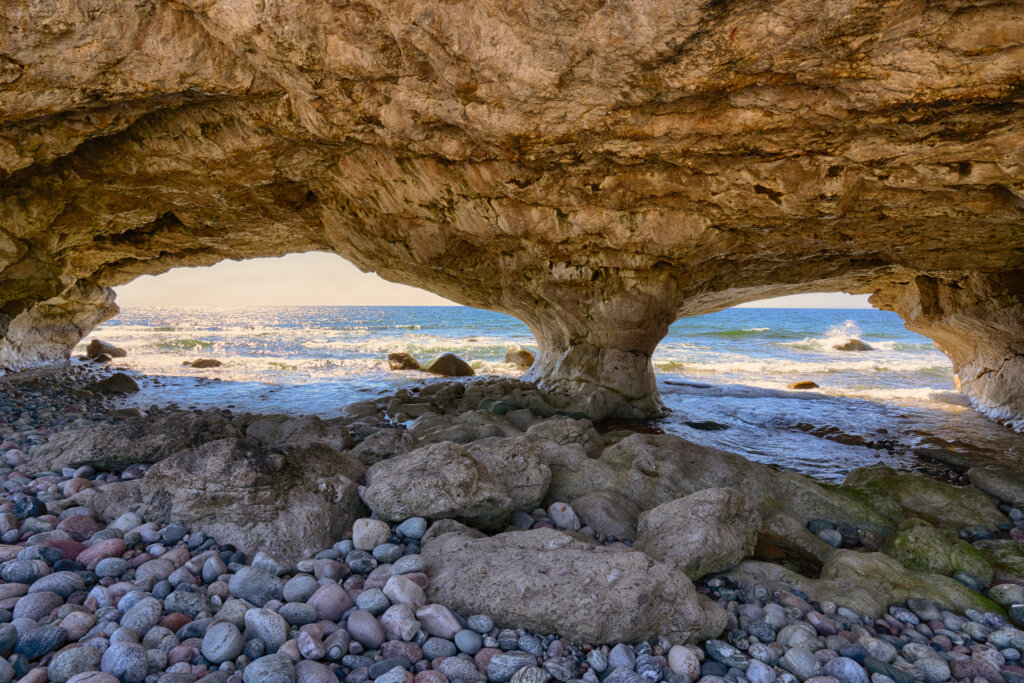
Bell Island
If you’re short on time and staying at St John’s, then the nearby geologically significant Bell Island is perfect for a day trip or short break.
Bell Island can be reached via ferry in about 20 minutes from Portugal Cove, which is about another 20 minutes (driving) from St John’s. Standing over a hundred feet high in Conception Bay, Bell Island is unmissable, with mesa-like sandstone that’s been worn into distinctive folds.
Mining used to be the main industry on Bell Island, so a visit to the Bell Island Community Museum should be your first stop to learn about the mines, one of which used to be the world’s largest submarine iron mine.
There are a variety of walking trails to explore Bell Island, or you can do a boat tour to see the geological formations, caves, cliffs, beaches, sea stacks and wildlife.
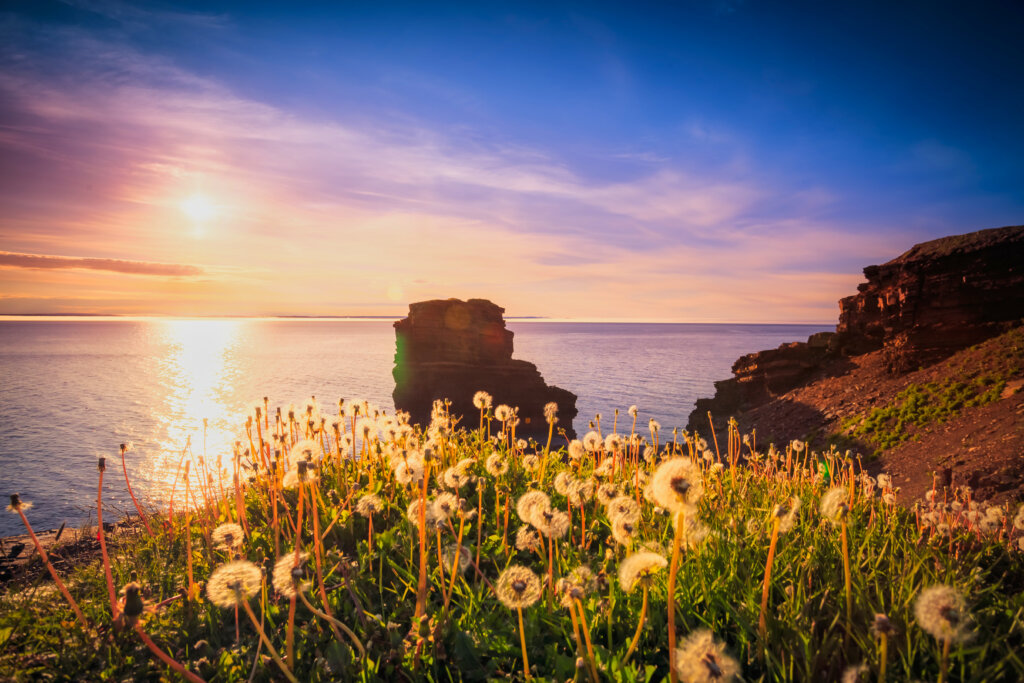
Fogo Island
Fogo Island is both the largest offshore island and one of the best places to visit in Newfoundland and Labrador, whether you’re into exciting adventures or admiring art.
While Fogo Island used to be most popular for outdoor enthusiasts it has also built up a reputation for luxury, particularly with the construction of the Fogo Island Inn. This sleek Nordic-style hotel sits on stilts on the rocky coastline, gazing out over the Atlantic Ocean and offering guests a truly luxurious stay – especially with those rooftop hot tubs!
Even if you don’t have quite the budget for that, Fogo Island contains a number of villages with other accommodations so you can explore the local art galleries and museums, including the Museum of the Flat Earth Society.
Of course, there are also some great hiking trails where you could see caribou grazing on land while whales frolic in the water.
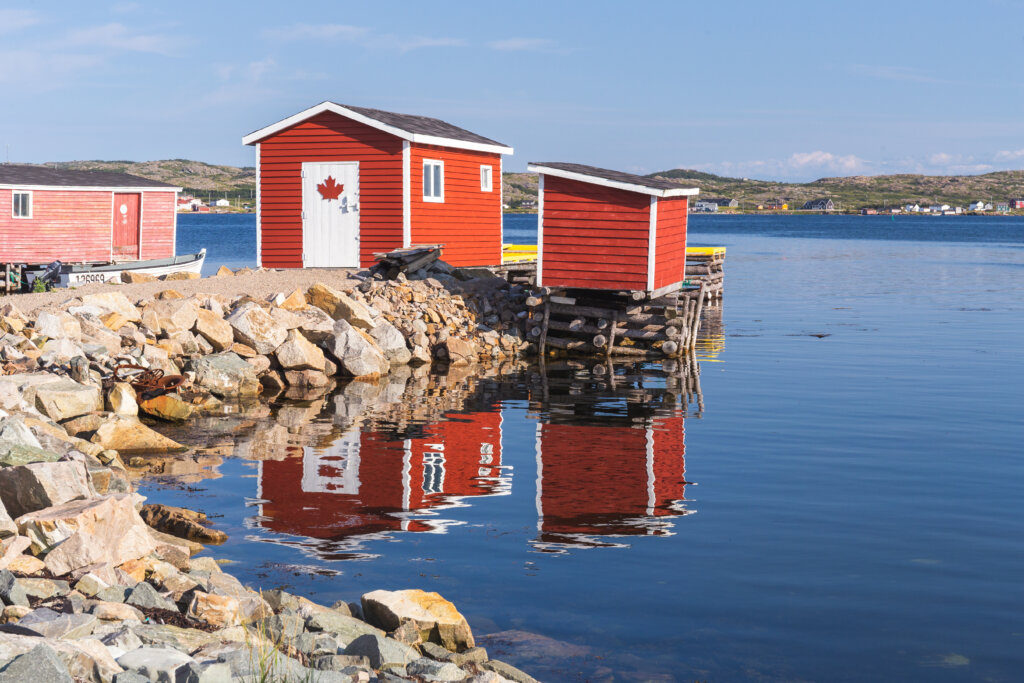
Cape St. Mary’s Ecological Reserve
Birdwatching enthusiasts all agree that Cape St. Mary’s Ecological Reserve is one of the best Newfoundland and Labrador places to visit if you want to see birds!
Located on the southwestern Avalon Peninsula of Newfoundland, Cape St. Mary’s Ecological Reserve is the site of one of the largest seabird colonies in North America. Thousands of pairs of northern gannets, black-legged kittiwakes, common murres, and thick-billed murres nest here, while other ducks, eiders and scoters winter in the waters off the cape.
There’s a lighthouse and interpretive center here as well, where visitors can learn more about the birds they might spot when heading to the clifftop viewing location. At the right time of year, humpback whales can often be spotted in the waters as well.
Torngat Mountains National Park
Torngat Mountains National Park is one of the best places in Newfoundland and Labrador to learn about the spirituality and culture of the local Inuit, who have lived here for thousands of years.
Located on the tip of Labrador bordering Quebec, this park encompasses 9,700 square kilometers of seacoast wilderness, protecting caribou, bears, wolves, foxes, polar bears, eagles and more. The name comes from the Inuktitut word Tongait, which means “place of spirits” and the best way to explore the park is with local Inuit guides.
In fact, you will most likely need local guides to explore Torngat Mountains National Park anyway, as it’s quite remote and can only be reached via charter plane, boat or snowmobile. Visitors also need to organize permits, we recommend checking out the official website for more information and guided tours.
Dildo
The town of Dildo is easily one of the most unusual and interesting places to visit in Newfoundland and Labrador, especially after it was featured on Jimmy Kimmel!
There is no real consensus on how the town of Dildo received its name, although it might have been one of a few ‘silly’ names in the area that James Cook (before he became a captain) was responsible for; others include Witless Bay, Tickle Bay and Cuckolds Cove.
However the name came about, it led to Dildo gaining some notoriety, which was further cemented when Jimmy Kimmel focused on it on his show; declaring Dildo the sister city of Hollywood and gifting the town the Hollywood-style Dildo sign which now overlooks it from a nearby hill.
If you come to Dildo for the laugh factor you’ll also discover a beautiful little fishing town, which is a great base for whale watching, and also home to charming B&Bs to stay in during your visit.
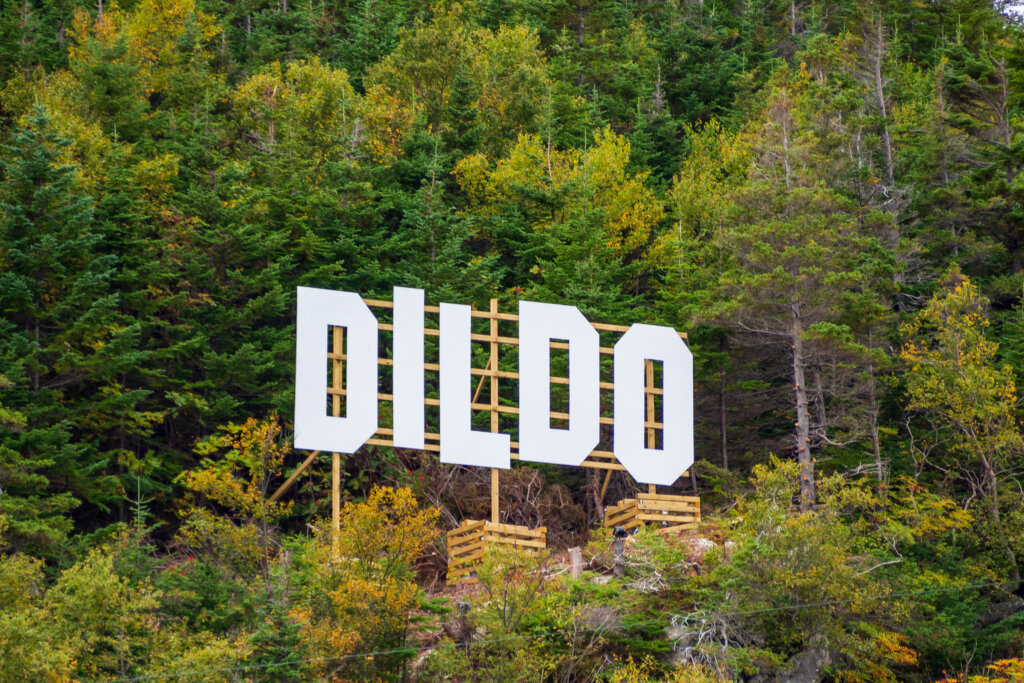
Did We Miss Any of Your Favourite Places to Visit in Newfoundland and Labrador?
Let us know in the comments so we can add more amazing spots to our list!
